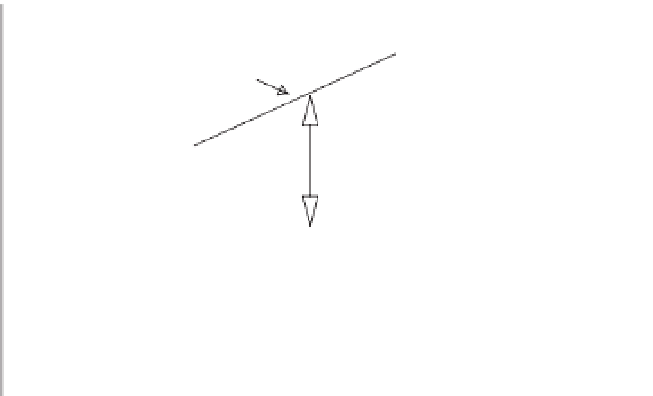Agriculture Reference
In-Depth Information
in capturing solar radiation at a low cost. At
a more complex level, there is a diversity of
simulation models, both for energy balance
and for crop growth and production.
However, there are reservations in using
models, from the user's side, and these stem
from the need for simple, robust and univer-
sal models (Bailey, 1999). In addition, pre-
vious work gathering relevant information
(for instance, on assimilates distribution)
needs to be done prior to the application of
a model, and in many cases this information
is not available (Gómez
et al
., 2003).
A primary aspect to be considered in
greenhouse climate control models is that
the grower's goal is to maximize the profit
(Bailey, 1998; Fig. 12.3). Therefore, and
given the normally existing variability in a
crop, the grower/user must be the one who
finally makes the decisions.
In Appendix 1 section A.9.1 the solar
radiation transmissivity models most com-
monly used in greenhouses are listed.
Use of models
Models have constituted a very useful tool
for research of the greenhouse physical
environment and the crop's growth and pro-
duction (Challa, 2001).
At the beginning, obviously, simple sta-
tionary models were used. The use of mod-
els in the design and management of control
systems has been widespread and very posi-
tive, but its application on a commercial
scale has been limited and restricted to
well-equipped greenhouses (Gary, 1999).
The simplest models, such as the rule
of thumb, and scale models, have been used
in Mediterranean greenhouses (Soriano
et al
.,
2004b). In these greenhouses, at different
levels of complexity and from the practical
point of view, the models which have
attracted the most interest are those of irri-
gation control and analysis of yield poten-
tial of the crops. Nowadays, in well-equipped
greenhouses, the control of the air tempera-
ture (that is regulated depending on the
available light) is widely used and this is
based on a simple model.
12.2
Computer Climate Management
12.2.1 Controls performed by
In heating, the primary goal of the control
systems is to adapt the heat supply to the
crop requirements. The secondary goal is to
dehumidify the air.
Cost of
environmental
control
Optimum
Max.
Crop value
Maximum benefit
Maximum yield
Value of the environmental parameter
Fig. 12.3.
Graphical representation of the economic optimization of greenhouse climate control (adapted
from Bailey, 1998).






